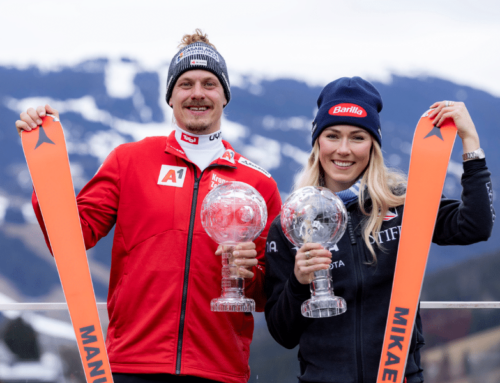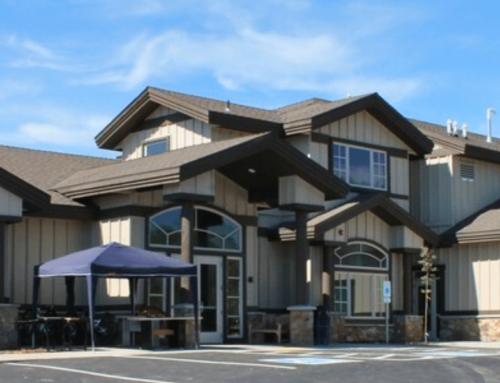Should ski cross be an alpine discipline?
The idea of creating a hybrid ski team at Sun Valley Ski Education Foundation (SVSEF) started as one coach’s mission to break down the barriers that separated the ski community into silos. After a few seasons with the club, Will Brandenburg, a retired alpine Olympian and current alpine program director at SVSEF, had begun to notice a problem in his program, a problem not uncommon across the sport of alpine ski racing in the United States – early-onset athlete burnout. Kids competing in his program were beginning to struggle with their relationship with ski racing as they began to reach the FIS age, threatening to leave the sport altogether. After years and years of training gates and putting everything they had into ski racing, the joy seemed to be fading for a handful of his kids.
Even if a racer was coming off of an injury, or looking to be a collegiate athlete in another sport, Brandenburg was not ready to give up on them just yet. He wanted to help foster a love for the sport by helping his athletes answer the question, “Why am I even doing this?.” A hybrid team, aka team Alpine X, allowed Brandenburg to switch up the program by allowing his athletes to explore more elements of skiing than just bashing gates and running drills.
Through the development of Alpine X, Brandenburg began to see in real-time the benefits of breaking down walls between alpine, park & pipe, freeskiing, and big mountain skiing, and his athletes found a new sense of love for the sport in its entirety.
As the kids began to develop stronger skill sets in big mountain skiing, building upon their strong foundation in gates, Brandenburg began to wonder if it would be worth putting them in a ski cross course to see how they reacted. He started teaching skiing in a way that leaned towards manipulating the body over terrain and features, building upon their alpine skills, and started realizing how fast they were progressing. Eventually, the team went to a USASA race (the current host of ski cross races in the United States) in New York. Within three days, his guys got 30 runs in on a 40-second track, and he saw massive improvement in the core skills he had been trying to develop with the guys.

That’s when the lightbulb went off in his head.
“I was blown away by it,” said Brandenburg. “I thought, we’re missing the boat here. I wanted to yell to everyone in the alpine community, ‘Guys, come check this out! There’s something here that can be developed and utilized more within our sport.’”
According to reports made to the development committee earlier this week, the ski team has begun to notice a deficit in speed skiers coming through the pipeline. Development coaches Sasha Rearick and Marjan Cernigoj often complain to development leadership that the athletes coming to them from clubs lack strong fundamentals. Young athletes struggle with the ability to manipulate terrain in slalom, giant slalom, super G, and downhill.
Overall, there is not much variety in training. Brandenburg’s pursuit of holistic education unintentionally led him to discover that the alpine community was missing out on something big, he says, something that could help them address these issues, in addition to the burnout problem he had initially set out to solve.
With the help of current ski cross World Cup racer Whitney Gardner, Brandenburg got to work creating a proposal to present to the western region that would bridge the gap between ski cross and alpine skiing.
In addition to being an active athlete, Gardner is a FIS alpine coach for the Squaw Valley Ski team and an ex-alpine racer herself. Personally, she has lived the story Brandenburg saw play out in Sun Valley. As a young alpine racer rising through the ranks, she began to feel a sense of exhaustion surrounding alpine skiing due to a lack of variety in training and routine. She began incorporating ski cross into her racing schedule to shake things up and eventually fell in love with the discipline. Now, she is active in the ski racing community as an athlete and close affiliate of the NGB and FIS. In her eyes, the proposal to adopt ski cross under alpine is a win for both disciplines.
“Ski cross inherently demands diverse and versatile skills from slopestyle (jump technique and agility on rails), halfpipe (acceleration through transitions and edge control), and alpine (turning fundamentals and speed awareness),” Gardner and the ski cross task force wrote in their recommendation to support this movement. “There is an evident skill crossover from ski cross that would benefit the development of alpine ski racers in overall skiing agility, mobility, coordination, managing adversity, as well as speed development through experiential terrain-based learning.”
Officially, the proposal would support the transition of ski cross from FIS freestyle to FIS alpine and start the conversation of how to implement the sport and its programs into youth alpine development.
After much deliberation, the proposal made its way out of the Western region and to U.S. Ski & Snowboard during this week’s Congress. First it was brought before the U14-and-younger, U16-and-older, and Ski Cross working groups, all which were in support of the effort. It later kicked up to the Alpine Development Committee on Thursday.
Over the course of the past few weeks, Brandenburg had come to see just how detailed his proposal would need to be in order to make it all the way through the congressional process. Coming into the committee meeting that morning, the best he was hoping for was some kind of task force that would be formed to explore the issue and begin hammering out the details.
As expected, there were some hiccups.
Leadership on the Alpine Development Committee, while generally supportive of the concept, questioned the logistics of taking on ski cross as a discipline, the ramifications for alpine financially and the question of Olympic starts. USSS Development Director Chip Knight jumped in to say that he was under the impression that at the FIS level, alpine skiing was not in support of the transition, and that freestyle was simply looking to offload the discipline.
From Tyler “TJ” Wallasch’s perspective, as a FIS athlete representative in the ski cross community, that is not the case. According to Wallasch, a meeting had been scheduled for April 4 (and postponed due to COVID-19) that would have discussed implementing ski cross and alpine at the FIS level, as multiple countries have shown interest in a hybrid program.

Canada, Sweden, Germany, France, Austria, Switzerland, and Italy already have these systems in place and support the shift at the FIS level, Wallasch says. A task force has already been created among these nations, with representatives from both ski cross and alpine to figure out how to best integrate the two disciplines.
“The U.S. is one of the last ones to make this integration,” said Wallasch. “Ski cross is the economic backbone to FIS freestyle. We bring in the most money for freestyle World Cup events, and we run pretty much independently of other freestyle events. We have our own staff, our own sponsors, and kind of function as our own thing. If it moves over to alpine, it would continue in its first few years running as its own, just under a different banner.”
Ski cross was deemed an official FIS sport back in 2004. In its early years as an official discipline, ski cross was supported by U.S. Ski & Snowboard until after its debut in the Vancouver Olympic Games. Since 2010, most American ski cross athletes competing on the World Cup and Olympic level operate independently. Ski cross in the U.S. operates under the United States of America Snowboard and Freeski Association (USASA). As an organization, USASA has hosted over 500 events each year, 110 of those events being regional ski cross races. According to the Ski Cross Task Force, there are over 100 current host venues that are fully homologated and up to the organization’s safety standards.
David Pym, the man behind the ski cross integration within the Canadian national team, was firing away in the comments section of the virtual development committee meeting, tossing in his support and attempting to emphasize that homologations and safety systems were already in place for ski cross under USASA.
There are gold medals to be won here in ski cross, and I think it’s been pushed in a corner, and I think we gotta look in that corner because there’s a lot more that it can offer us as an alpine community.
WILL BRANDENBURG
Team Summit’s Aldo Radamus, also threw his hat into the ring, saying he fully believed ski cross belonged under the alpine umbrella and not freeski’s due to the nature of the event.
Multiple athletes on the World Cup level have utilized ski cross to benefit their speed training, including Tina Weirather, Peter Fill, Daron Rahlves, and Sam Morse.
“There are gold medals to be won here in ski cross, and I think it’s been pushed in a corner, and I think we gotta look in that corner because there’s a lot more that it can offer us as an alpine community,” Brandenburg explained to the development committee. “Once we get into the details there’s a lot to work through and I understand that. But I think if we can look past some of that and see the good in what we can build together here, there’s another way to teach skiing.”
Although he thought the proposal has merit, Knight continued to push that he has reservations about implementations into regional championships and structured competitions. He cautioned the committee against biting off more than they could chew.
For this reason, he motioned that the proposal be passed off to the U14-and-younger Working Group, so the discussion would center around development at the age group where dropoff begins to occur.
“Structurally, I think there are challenges and we should just focus it in an area where skill development is critical as Will has been highlighting,” said Knight, “as well as an area where we feel like we can have some discussion and a good feedback loop coming back. I think this is another example of a proposal that has a lot of merit but needs to focus the implementation on it and move in a piecemeal fashion.”
Brandenburg, who had spent the past season developing this idea around FIS-aged and younger athletes, thought that pushing the proposal to the U14-and-younger Working Group was a good starting point, but he’s concerned it does not fully acknowledge the health of sport side of the proposal – the side that gave FIS-aged kids, like those on team Alpine X, a shot at falling back in love with skiing.
Despite his repeated requests for a task force to be created to specifically address the integration of ski cross into alpine, the proposal was pushed to the U14-and-younger Working Group to review over the summer. It may not have been the exact outcome Brandenburg and Gardner had been hoping for, but the idea is still on the table, and support from many members of the alpine community seem to be there.
“For me the proposal did its job,” said Brandenburg. “It started the conversation and now if done properly, that committee can move forward next year with a proposal with detail and a proposal with meaning, because mine was just a conversation starter, and that’s a huge win.”
Have some thoughts on this? Send a letter to the editor. If it’s good, we’ll publish it.





















